How Gdańsk is Reclaiming its Industrial Waterfront
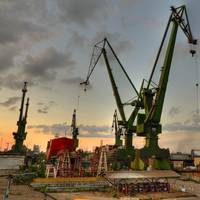
The prosperity of port cities, throughout history, has been closely tied to the ports’ ability to adapt to economic and technological change. As ships got bigger, ports had to keep up. This has often seen the port proper grow apart from the city whose name it bears because the old harbor could no longer accommodate the needs of modernized shipping.In those European cities located by rivers, port activities have often migrated towards the estuary. The ships headed for the port of Liverpool now berth in docks stretching north of the original Royal Albert dock…
How Climate Change is Altering River Shipping
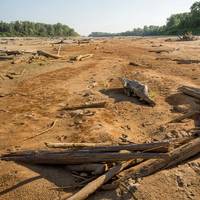
Rivers are critical corridors that connect cities and ecosystems alike. When drought develops, water levels fall, making river navigation harder and more expensive.In 2022, water levels in some of the world’s largest rivers, including the Rhine in Europe and the Yangtze in China, fell to historically low levels. The Mississippi River fell so low in Memphis, Tennessee, in mid-October that barges were unable to float, requiring dredging and special water releases from upstream reservoirs to keep channels navigable.Conditions on the lower Mississippi may be easing somewhat…
Inland Waterways Report: Columbia-Snake River System
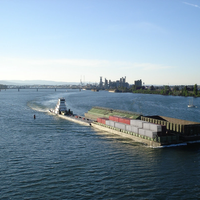
It’s amazing to consider that a commercial vessel in the Pacific Ocean, approaching the mouth of the Columbia River, can continue its eastward journey to finally tie up at the Port of Lewiston, in Lewiston, Idaho, America’s most inland West Coast port, 465 miles from the Pacific Ocean.The Columbia and Snake Rivers form that critical east-west waterway, an economic powerhouse regionally, nationally and internationally. According to the Pacific Northwest Waterways Association (PNWA)…
Keeping the Inland Waterways Open: Balancing Maintenance and Operational Requirements
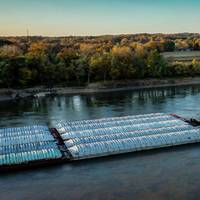
Inland waterways, sometimes called ‘nature’s superhighways’ provide a strategic advantage related to security, economics, and trade for any nation whose geography, topography, and climate enable this natural infrastructure. Economic benefits are realized in small rural areas through large urban communities that utilize the system for efficient transportation and improved markets. However, deliberate operational, resource, and policy efforts, along with broad stakeholder integration, are required to maintain and operate such a system.
The Mighty Mississippi: Taming the Bull
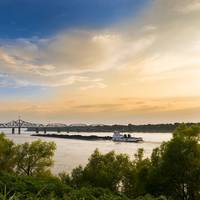
The beneficial use of dredge material sets a record in FY 2019. And, we’re just getting started. Funding will be the key.In mid-November 2018, concerns began to rise about an unseasonably high river stages on the Upper Mississippi River Basin generated by significant precipitation events. As a navigation representative on the Lower Mississippi River, I have unfortunately learned that the river system is changing and that precipitation around the world has been increasing for decades.
Seaway Closing to Cost $250Mln per Week
Closing the St. Lawrence Seaway in December to accommodate higher water outflow at the Moses-Saunders dam would cost the Canadian and U.S. economies $250 million/per week — impacting farmers’ grain exports, manufacturing plant operations and disrupting deliveries of fuel, construction materials and road salt for winter safety to cites throughout the region.The Chamber of Marine Commerce is issuing today’s comments to provide a wider context of the economic repercussions related to calls to increase the water outflow at Moses-Saunders dam to levels that would be unsafe for navigation and halt shipping on the St. Lawrence Seaway during December.Increasing outflows above the safe navigation limit to the highest levels possible would lower Lake Ontario levels less than 4 centimeters a week.
WRDA 2016: Reclaiming Our Transportation Infrastructure

In the United States, transportation infrastructure is the bedrock of our supply chains. Ports and waterways in the United States moved over 2.3 billion tons of goods in 2014. A robust maritime infrastructure to support such ports and waterways helps goods to move freely and aid in more flow of trade and ultimately greater economic stimulus. Port authorities and waterways commissions are always seeking better ways to increase cargo volume and subsequently aid their surrounding states and regions - which all benefit the overall commerce of our nation.
Royal HaskoningDHV Opens Office in Ho Chi Minh City
International engineering and project management consultancy Royal HaskoningDHV has celebrated the opening of its new office in Vietnam in a ceremony which also marked 30 years of operations in the country. The event was attended by Mr Simon van der Burg, Dutch Consul General in Vietnam together with representatives from Royal HaskoningDHV including Mr Erik Oostwegel, Chairman, Ms Jaska de Bakker, CFO and Mr Lars Crombach, Managing Director in Vietnam. The opening of Royal HaskoningDHV’s new office in Ho Chi Minh City underlines the company’s strong growth in Vietnam. The company, which has offices in Ho Chi Minh City and in Hanoi, has relocated from its previous premises in the economic centre of Vietnam to a larger, modern building in a new business district.
Dutch Experts Starts Work on Philippines Coastal Protection Strategy
International engineering and project management consultancy firm Royal HaskoningDHV is leading a multi-disciplinary team in developing a sustainable coastal protection strategy to reduce flood risks for the cities of Tacloban and adjacent Palo in the Philippines. Tacloban is an important strategic location for the prosperity of the Philippines. It is a regional trading hub and a centre for commerce, industry and education. Until Typhoon Haiyan struck in 2013, Tacloban was the fastest growing city in the Philippines, with a daily population of 1.2 million. The typhoon killed thousands of people and brought devastation on a massive scale to homes, businesses and infrastructure. Even for a typhoon unusually hard winds of up to 378 km/hr and storm surges of 4-6 m high battered the area.
Fugro Wins Flood Risk Data Contract
Fugro, as a member of the Compass PTS joint venture, has been awarded an indefinite delivery/indefinite quantity (ID/IQ) contract for flood risk data services. The contract was awarded by the U.S. Department of Homeland Security’s Federal Emergency Management Agency (FEMA). The Compass PTS joint venture, led by AECOM Technology Corporation and CDM Smith, unites partners Fugro, T&M Associates, Halff Associates, and ABSG Consulting. It will provide architectural and engineering support services to continue FEMA’s goals to reduce risk to life and property by increasing public awareness. As the geospatial content and knowledge provider of the joint venture, Fugro will deliver integrated LiDAR-derived solutions and traditional and oblique imagery solutions as well as visualization software.
Sea Forecasting Project Aims for Commercial Service

WaveSentry, a Technology Strategy Board funded project backed by a consortium of industry and academic experts, successfully concluded at the end of April with an event to present the key outcomes of the project explore technologies and opportunities for further development of wave measurement and maritime forecasting. The WaveSentry project consortium aimed to develop a new information and forecasting tool for managing the risks of marine operations in adverse sea states. Delegates…
Widening Scope of Waterway Study
The U.S. Army Corps of Engineers has "made good progress" in broadening a study of possible navigation improvements on the Upper Mississippi River-Illinois Waterway system to give greater consideration to ecological restoration, says a new report from the National Academies' National Research Council. However, because of flaws in the models used in the study to predict demand for barge transportation, the economic justification for expanding locks on the rivers has not yet been demonstrated, the report says. And little attention has been paid to inexpensive, nonstructural navigation improvements that could ease current barge traffic. "The Corps should be commended for expanding the scope of its study, but changes are still needed to make the study fully credible," said John J.





